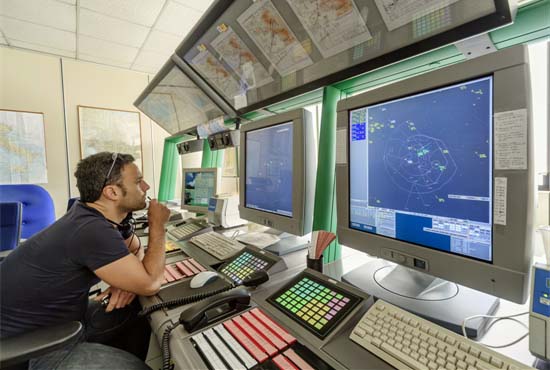Airport Architecture and Design
Aviation is one of the largest and most important industries in the world. A press release published by the Federal Aviation Administration states, 'According to the forecast, the total number of people flying commercially on U.S. airlines will increase to 1.2 billion in 2032.
Large airports can be divided into multiple areas. Each having a separate function. These areas can be:
- Passenger Check In
- Shopping
- Flight Support - Control tower, fuel and deicer supply systems for trucks and tram transportation from one terminal to the next.
Passenger Check In
Passenger arrives at the airport and checks in using the electronic kiosk machine. Proceeding to the baggage check station, bags are electronically weighed and assigned to passenger. Then they are moved to appropriate loading area by conveyor. After clearing TSA and the security process, one proceeds to the assigned terminal. Moving walkways, escalators and trams aid in the movement of passengers.
Shopping
Various shops, restaurants, and bars/pubs are arraigned in route and in the terminal. Many types of restaurants exist in large airports. Fast food to fine dining is available in most airports. Duty-free shops are popular because they offer goods exempt from certain local or national taxes and duties. Bars/Pubs offer a place close to boarding location to pass the time between flights.
Flight Support
The control tower designates all inbound and outgoing flight operations. Large installed fueling systems allow the aircraft to receive fuel at many locations. Smaller airports pump fuel from large tanks into trucks and the truck deliver the fuel. Deicing fluid must also be stored and transferred to deicing systems.
When Electricity is Lost
Power supplied by the utility company is quite dependable. However, that does not mean that interruptions will not happen. Weather is a main contributor of power failures. When an airport experiences power outages emergency power is supplied to critical systems. The Federal Aviation Agency (FAA) regulates backup power requirements for all U.S. Airports.
On October 1, 1918 the U.S. Department of Transportation Federal Aviation Administration released an ORDER with subject of Electrical Power Policy Implementation at National Air Space Facilities. The purpose of the order is to provide guidance for electrical power policy implementation at National Airspace Systems Facilities (NAS). The order identifies standard electrical power configurations insure NAS facilities can complete assigned mission. Now airports have strict requirement for backup power. For more information on the order go to
FAA Order 6950.2D.
December 18, 2017 USA Today reported a power interruption at Atlanta Airport. When the airport was constructed, the utility power cables and the emergency power cables were routed through the same tunnel. Switching gear that receives two separate power inputs from utilities and controls 7 separate power cables throughout the complex are housed in the same tunnel.
The switchgear failed, and an electrical fire broke out. The fire was so intense that cables from the emergency generator ignited. The airport suffered a total power outage for 11 hours. This canceled 1,100 flights and stranded 30,000 passengers. For complete details go to
USA Today. Dallas Fort-Worth Airport has routed utility power in a geographic separate location from the emergency generator cables. This prevents an electrical fire in one location from destroying all power related cables.
Airport Emergency Power Systems
Established airports often increase in size and complexity. This drives the need for more power from the utility company. The emergency power system should be upgraded to adhere to FAA regulations.
Tulsa International Airport has emergency generator sets located in multiple locations. The main terminal building had increased its electrical demand to 4,000 kW and was served with a single 100 kW emergency generator. They recently upgraded their emergency supply capabilities to 4,000 kW.
As other airports grow in size the need to update emergency power systems is increased. Often multiple generators operated in parallel is the answer to the need for greater backup power. Natural Gas- or Diesel-powered generators are installed inside of maintenance buildings. Automatic Transfer Switches (ATS) route the load from utility supply to emergency supply. Control panels allow multiple generator paralleling functions and alarm/monitoring functions.
When increasing the generator size, the supporting equipment and systems must also be updated. The amount of increase in capability determines the amount of increase in auxiliary systems upgrade. Increasing a capability of a backup system by 3,900 kW to supply a total of 4,000 kW is considerable upgrade and required supporting equipment upgrade. If the installed auxiliary systems (control panels, switchboards, etc.) were sized for easy upgrades purchase of complete support systems are avoided.
We have 35 plus years of power generation experience. Our stock includes new, and preowned generators in all sizes and styles. Go to
Inventory to view our supply. We often can arrange shipping within 24-hours of purchase. Our technical staff can travel to your site to provide maintenance, troubleshooting, removal, installation and load testing services.
Contact Us with any questions.
>>Back to Articles & Info<<